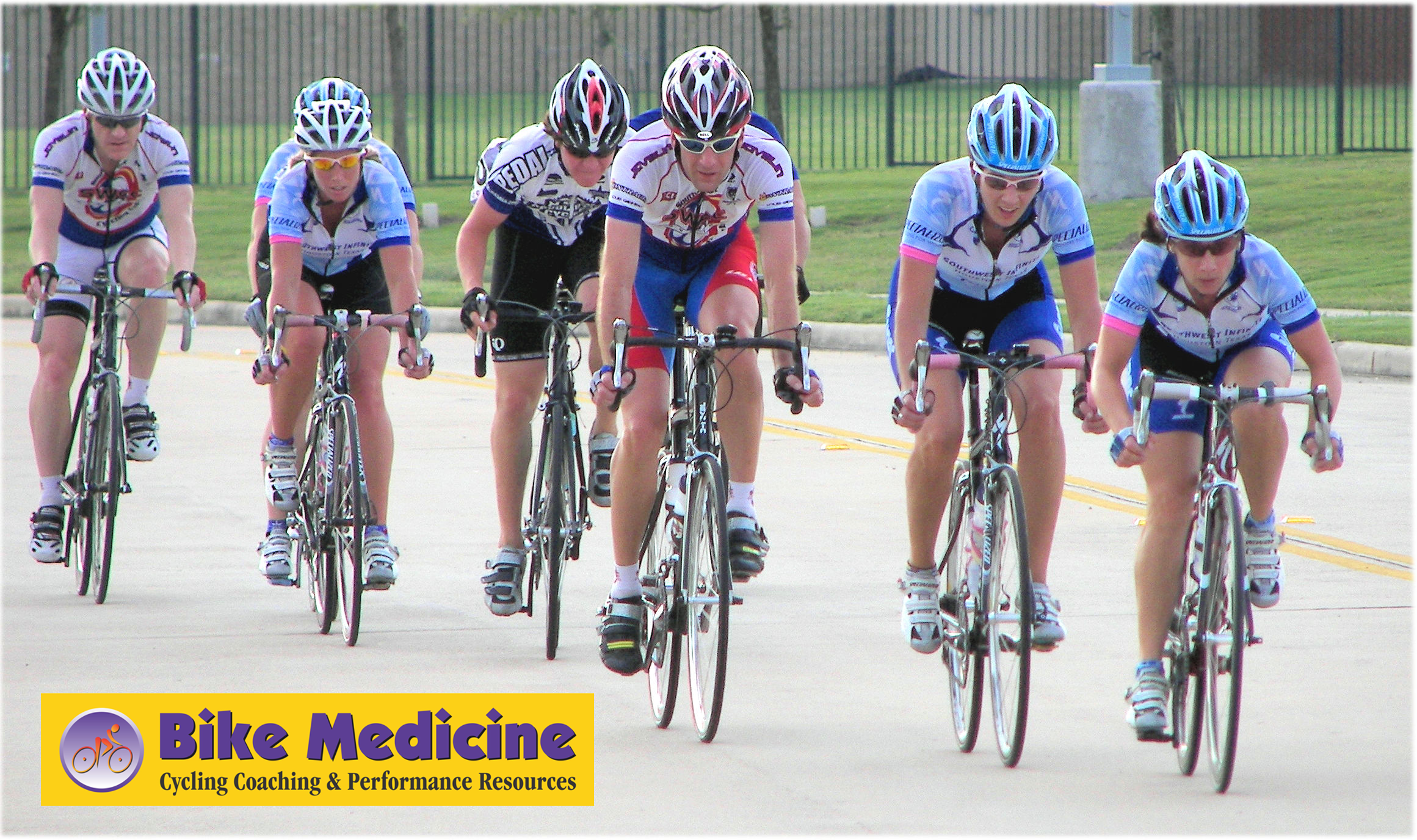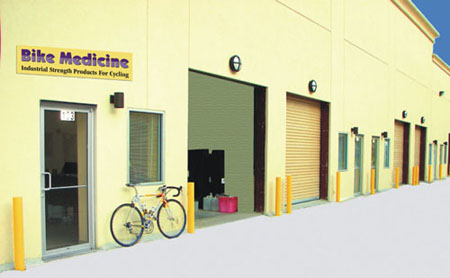Bike Fitting – The Bike Medicine Approach
Bike Fitting – The Bike Medicine Approach
Professional Bike fitting used to be a tool found only in the domain of race teams, only for the select few. In recent years, it has become an important resource within the bicycle industry for riders of all levels. Interestingly, the older, less fit beginning rider is often in more acute need of a professional level fitting than is a seasoned racer.

At Bike Medicine, our philosophy is that every rider is different and all have had unique things happen to their bodies before they decide to ride a bike. We strive to achieve two deceptively simple goals. They are comfort and the ability to produce power without injury over an extended period of time. If a cyclist is not comfortable, they will not be relaxed nor able to produce power.
For the bike racer a proper bike fitting is a tool to go faster for longer. For the new or recreational cyclist, it is a way to help prevent injury and eliminate barriers to enjoying the sport on a long-term basis. With older riders there is often an expanded set of fitting concerns such as stiffness, joint deterioration, and many other age related issues.

Some Numbers To Consider:
During a 6 hour bike ride, you can repeat your pedal rotation over 30,000 times. Think about how critical it is to have proper form in doing a weight exercise in the gym. 50 repetitions can hurt a joint. Imagine what over 50,000 incorrect repetitions on a bike can do! Now multiply that potential damage over 100 rides in a year. Preventing repetitive motion injuries is a critical component for a successful bike fitting.
Here is the math: The average cadence (Rotations Per Minute) of the pedals) of a recreational cyclist is about 80 RPMs. Most 100 mile recreational rides produce about 6 1/2 hours of riding. So, 80 x 60 x 6.5= 31,200 pedal strokes.
Imagine the potential damage that can occur in a season of riding with a poor bike fitting!
The Complete Bike Medicine Pro Fitting - 8 Steps to Success
Step 1
Before we begin the actual fitting, our practitioners conduct a thorough interview. We need to know about your cycling goals, plus all previous injuries and current medical or orthopedic issues.
Step 2
We perform a set of flexibility and bi-lateral symmetry tests. Some of the analysis points we look for are; Leg length discrepancy, hip placement, muscular balance and nerve impingements. Each of the points we check can have a dramatic effect on your final fitting results.
Step 3
Measure once, measure twice. It is critical to take careful body and limb measurements. Often a fitting client may be tense and drawn up. We teach them to relax so that we can get accurate lengths of all of the bones and spine. This is important when sizing for a new bike to be purchased later. We use the European method for bike sizing, most often used by professional teams. Only after we have accurate measurements for the spine, legs and arm lengths, is it possible to determine the size of a new bike by the effective top tube length. We arrive at a combined number for the top tube and handlebar stem that works for all frame brands and geometries.
Step 4
If you need in-shoe orthotics, Bike Medicine dispenses Vasyli Medical, some of the best in the entire industry. Plus, Bike Medicine keeps a library of try out saddles for our clients. We believe in allowing you to try and thoroughly test a saddle before making a purchase. That way you will be sure of what you are getting. Often it will take a week or two to arrive at a saddle decision.
Step 5
Most bike fittings begin on the stationary trainer. Initial saddle height, bar height, saddle setback, saddle angle, cleat position, shifter position and bar rotation is set up. We laser align the knees from the side and head on for optimum position. Next, we use a video motion capture system that is highly useful in illustrating and documenting biomechanical and form problems. For certain performance oriented clients, we use a watt power measurement system to fine tune subtle positioning.
Correct, unrestricted breathing is mandatory for best performance on the bike. With any position change, we check for any form of restriction and look to optimize the flow of respiration. Since cycling is a dynamic activity, we carefully check the range of vision and how it is affected by various handlebar heights. This allows us to obtain an optimal positioning without compromising safety. Too low of an upper body position often does not allow a rider to comfortably look far enough ahead.
Keeping the airway open and unrestricted is a prime consideration. So is the diaphragm usage and intercostal expansion. Any form of breathing restriction is a performance penalty. Having a correct bike fitting can be a tremendous boost for your cycling performance, through increased comfort and the ability to produce greater speed, power delivery and freedom from injury.
All too often, people are fitted to a preconceived image, not for their best actual performance and long term comfort.
Step 6
The bike fitting professionals at Bike Medicine believe that the best way to assure our work has been performed correctly is to take the client on an analysis ride, preferably 20 miles or more. In our experience, this is an absolutely essential step that is the actual proving ground to determining the effectiveness of the entire fitting procedure. That gives us the opportunity to observe the rider carefully under a variety of conditions and maneuvers. We use the road ride to fine tune our settings and make other corrections. Expect a number of adjustment stops on the ride. In our experience, the rider’s body moves and reacts differently on the road with its varying conditions than it does on a stationary trainer.
Step 7
After the fitting session, we want our clients to return to Bike Medicine after about 2 weeks, or about 250 miles. We then assess any difficulties and make the necessary adjustments for fine tuning. Then, after another 2 weeks, our clients are welcome to return again if any other issues arise. It is all included in the original fitting cost. Our concerns at that point are performance increase, maximized respiration, better bike control and handling, increased comfort, and lastly greater confidence.
Step 8
Detailed Fitting Report for your records to set up another bike in the future. After the entire fitting process is completed, we give you all of your setup data. This is how we work with the pro teams. This data will empower you to set up another bike perfectly in the future, anywhere. If you decide to buy a new bike in the future, you will be able to make a confident and informed choice. We like making our clients self-sufficient.

What to expect AFTER the Bike Medicine Fitting
New muscular recruitment patterns take time to settle in and feel solid. You are highly encouraged to come in with a 2-3 week window of easy riding after the fitting work to give your muscles and nervous system time to adapt to the changes. You will most likely experience one or more of the following:
- New sensations through the whole body as your feet, pelvis, back and hands can wind up in much different positions than when you arrived.
- Small ring efforts without hills at a heart rate of under 75% max for 2-3 weeks to give your body time to develop the new motor patterns required for the new position.
- New balance sensations. (Adapting to these new balance sensations will require frequent riding without hard cornering, sprinting, long efforts and fast descents.)
- Minor aches and pains caused by your body’s previous motor patterns attempting to function with the new position.
- Improved breathing. We strive to allow better air flow and less restriction in the diaphragm stroke.
- Greater power delivery. Once all of the fitting elements come together, more power can be delivered and you will be much faster, more comfortable and the risk of injury should be reduced.
What to Bring for a Bike Fitting
- Bike
- Shoes
- Replacement cleats
- Orthotics, insoles, foot beds
- Cleat shims or wedges
- Cycling clothing, jersey shorts, etc.
- Eye wear
- Helmet
- Gloves
- Saddle bag with contents
- Cell phone
- Sunscreen
- ID
For more information or to make a bike fitting appointment:
Call Bike Medicine at 281-561-7499, or email to [email protected]
Bike Medicine Coaching Resources
10511A Windsor Lane, Suite 103
Houston, TX 77031
(281) 561-7499 Local calls
(866) 286-5823 Toll Free
[email protected] For general email contact
Monday to Friday 9am to 5pm, CST
Saturday & Sunday By Appointment

